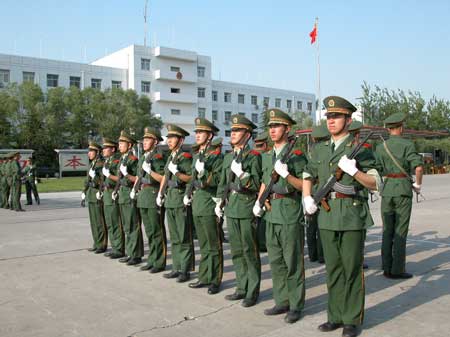(Ecns.cn)--Whether it be through mergers or the dissolution of universities, changes to curricula or improvement of administrations, after two previous historic reforms – one during the Republic of China and the other just before the carrying out of the "Reform and Opening-up" policy – China's military academies are now set to undergo a third period of transformation.
Although the government has yet to publish any formal detailed plan, the aim is clear: to make academies capable of cultivating talents who can acclimatize to the international military of the future.
More than just a name change
On July 11, 2011, the 16th meeting for PLA military academies was held in Beijing. Unlike previous ones, which had been held every five years, this meeting had been put off for three years (the last one was in 2003). Its most notable result was the changing of the names of many military schools.
Hefei Institute of Artillery in east China's Anhui Province was changed into an army officer college, reminding some people of West Point, an army officer college in the United States. The change illustrates that China is focusing more on the cultivation of army commanders, and that the school will foster more commanders of infantry, artillery and armored forces, according to Wu Xiang, the first president of the school.
The names of some schools associated with the air force and navy were also changed, according to the Southern Weekly.
Downsizing
Overstaffing in academy organizations has been an ongoing problem, and as time goes by its negative impacts have become more and more apparent.
In almost every Chinese province, there is a junior college to foster armed police commands, for example. The repetition of these schools around the country is redundant and not easy for the Headquarters of the People's Armed Police (PAP Headquarters) to manage.
Less than two weeks after the meeting, the PAP decided to reorganize 27 armed police colleges into 14, with all of them to receive orders directly from PAP Headquarters.
But the overstaffing of organizations and academies is not limited to armed police colleges.
"Downsizing the number of military academies is an international trend that has happened in almost every big country," said Liu Jifeng, a professor at the National University of Defense Technology. The number of China's military academies remained at 100 for a very long time. However, before the meeting in 2011, the number had already been reduced to 67.
Military training meets university education
Besides dealing with the organization of academies, the education of military students will also be a key point. As such, further combination of traditional military school training with education provided by comprehensive schools can be expected.
Starting from 2003, the number of national defense students has increased, and some military academies have already launched education programs in cooperation with comprehensive universities. Only studying military knowledge will not equip a student for the future military, said an insider.
"The design of curricula needs to be creative," said Zhang Yafei, a professor at a military academy. "Education needs to make students fit for their future careers, and help them use the knowledge to solve problems they may encounter in the future."
Starting from this year, many military academies have changed their curricula and teaching models. Though the detailed plan has not been announced, it is expected that in spring of 2012 even more changes will be seen in these schools.


















